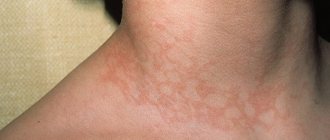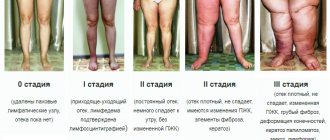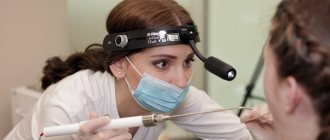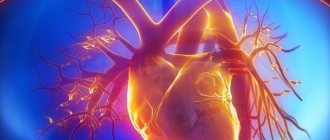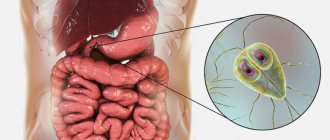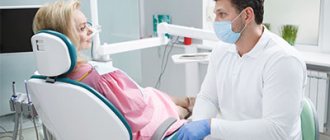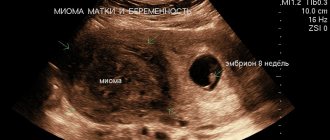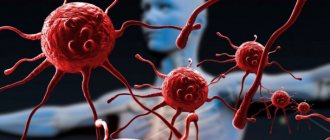Dermatovenerologist
Khasanova
Alina Rashidovna
8 years of experience
Make an appointment
One of the forms of vasculitis that develops as a result of an allergic reaction of the body is erythema nodosum. This is the name for inflammation of the blood vessels that penetrate the epidermis, as a result of which painful pink or bluish nodules form in the dermis and subcutaneous fatty tissue. Vascular damage is local in nature and is limited mainly to the lower extremities.
Why does inflammation of the skin vessels develop?
There are several factors that provoke the onset of the inflammatory process in the vessels of the epidermis:
- bacterial infectious diseases caused by streptococci - scarlet fever, tonsillitis, pharyngitis, otitis media, etc., after which erythema nodosum of the lower extremities develops as a complication of the disease;
- long-term systemic disease - tuberculosis, lymphogranulomatosis, trichophytosis, yersiniosis;
- long-term course of treatment with antibiotics, bromides, salicylates, iodides or sulfonamides;
- vaccination;
- ulcerative colitis;
- cancer;
- Behçet's disease;
- pregnancy and the associated hormonal changes in the female body, and the risk of developing erythema nodosum increases significantly if the pregnant woman has a history of chronic infectious foci;
- hereditary predisposition to the disease: it is often diagnosed in several generations of the same family or in close relatives;
- allergies, which contribute to the development of a chronic form of pathology.
Erythema nodosum most often affects young people 20-30 years of age. Before the onset of puberty, the incidence is the same in boys and girls, but starting from adolescence, the disease occurs mainly in women, among whom the incidence is 3-6 times higher than in men. There is a certain seasonality: in winter and spring, the number of visits to the doctor about this increases significantly due to decreased immunity and an increase in the number of infectious diseases, including streptococcal infections.
Causes
The exact causes of the development of erythema nodosum have not been thoroughly studied to date. However, it is known that the occurrence of this disease can be provoked by the following factors:
- hereditary predisposition;
- infectious diseases of various origins;
- sarcoidosis;
- the use of medications belonging to different groups: bromides, oral contraceptives, sulfonamides;
- Crohn's disease;
- allergic reactions and general intoxication of the body;
- ulcerative colitis.
An important role in the clinical picture of erythema nodosum is given to the condition of the blood vessels of the lower extremities. The likelihood of relapse of erythema increases significantly in patients suffering from thrombophlebitis and varicose veins.
Due to increased stress on the vessels of the lower extremities during pregnancy, during this period of a woman’s life the risk of developing erythema nodosum is also considered increased.
However, there are cases where erythema nodosum occurred in the absence of visible causes. According to doctors, this may occur due to an allergic reaction, the development of which was caused by an unknown allergen.
Clinical manifestations of pathology
The characteristic symptoms of erythema nodosum allow specialists to accurately recognize the disease.
- Acute onset with a sharp deterioration in condition, chills, signs of fever, weakness, and loss of appetite.
- The appearance of nodular rashes on the skin, and the nodes form in the lower, densest layers of the dermis or in the subcutaneous layer of fatty tissue and rise above the skin level. The size of the nodes varies from 0.5 to 5 cm, swelling forms around them, due to which the boundaries of the node are blurred, marked only by a change in the color of the smooth skin to bright pink or bluish.
- Rapid increase in the size of nodes formed under the skin. After some time, growth stops.
- Soreness of the nodes is one of the characteristic symptoms. It can appear spontaneously or only when you press on the inflamed area of skin.
- Pain and inflammation in the joints is another characteristic sign. Large joints become inflamed in about a third of patients: tissue swelling appears and the temperature rises locally. Arthropathy and a feeling of stiffness are characteristic of most cases of the disease.
- After two to three weeks, the nodes begin to shrink and then disappear completely. In their place, spots with discolored skin remain for some time, and peeling of the skin is possible. At the same time, inflammation of the joints is resolved.
Acute erythema nodosum lasts about a month. In the absence of proper treatment, the disease becomes chronic with periodic remissions and exacerbations. Relapses are characterized by the formation of single inflamed nodes, which persist for several months with mild or completely absent signs of infectious intoxication.
Are you experiencing symptoms of erythema nodosum?
Only a doctor can accurately diagnose the disease. Don't delay your consultation - call
Types of erythema
In order for the treatment of erythema to be as effective as possible, the type of erythema must be determined during the diagnostic process. There are several different types of this disease. Toxic erythema appears in newborns and is a physiological norm. The child develops skin rashes. No other symptoms are observed. This is a natural manifestation that disappears on its own about a week after its appearance.
Erythema infectiosum occurs in a person suffering from acute infectious diseases of unknown etiology. It appears in both adults and children.
Exudative erythema multiforme , as a rule, develops with colds. Characteristic symptoms of the disease are severe headache, general malaise and weakness, pain in the joints and throat, rashes that mainly appear on the skin of the hands and feet, as well as on the palms, legs, genitals, and oral mucosa. Pronounced rashes can be distinguished even in the photo. These are reddish spots with clear boundaries, which sometimes become vesicles with serous contents, which open on their own, leaving bleeding erosions. If the disease is not treated, death can occur.
Erythema migrans is a characteristic symptom of Lyme disease , which is transmitted by a tick bite. A ring-shaped erythema appears around the place where the tick has attached itself, which increases very quickly and at the same time turns pale in the center.
Ring-shaped erythema is a chronic disease. The reasons for its manifestation are poisoning of the body, infectious diseases, and allergic reactions. It is characterized by the appearance of spots that have a rounded shape. These spots merge into rings. More often the disease develops in young men.
There are also other types of erythema that appear in certain pathologies and diseases.
Diagnostic methods
Laboratory test results do not provide a basis for definitively diagnosing erythema nodosum in a child or young person. They are aimed, first of all, at identifying the causes of the disease and its accompanying pathologies. The patient may be prescribed:
- clinical blood test;
- bacterial culture of nasopharyngeal mucus microflora to identify streptococci;
- stool culture for suspected yersiniosis;
- tuberculin diagnostics;
- skin allergy tests;
- blood test for rheumatoid factor and consultation with a rheumatologist;
- tissue biopsy of the nodular formation and histological examination of the sample to identify the inflammatory process in the walls of the capillaries.
After clarifying the etiological factor, concomitant vascular pathologies or foci of chronic infection, the patient may need consultation with a specialized specialist - an infectious disease specialist, pulmonologist, otolaryngologist, phlebologist, etc., as well as additional instrumental studies.
Nodular pathologists
The causative agent of erythema nodosum is usually streptococcus, and less often - some other infections. It often occurs against the background of tonsillitis, scarlet fever, and tuberculosis. You can recognize it by the following signs:
- rashes of bright red color, with bulges forming in the subcutaneous layer;
- asymmetrically located spots;
- gradual bluing of the spots, then yellowing, similar to the resorption of bruises;
- presence of fever;
- painful sensations and itching in the affected areas of the skin;
- the presence of multiple seals on the legs.
The patient is prescribed a course of antibiotics, antihistamines, as well as external treatment with antiseptics.
Therapy of the inflammatory process
Treatment of erythema nodosum is aimed, first of all, at getting rid of foci of chronic infection or other causative pathology. It includes:
- antibiotic therapy if the inflammatory process is infectious;
- desensitizing therapy if the cause of the disease is an allergic reaction of the body;
- taking anti-inflammatory drugs to relieve inflammation and relieve pain;
- plasmapheresis, cryopheresis or hemosorption to quickly eliminate intoxication;
- corticosteroid and anti-inflammatory ointments for inflamed joints and erythema nodes;
- physiotherapeutic treatment - ultraviolet irradiation, laser therapy, background cutter, magnetic therapy, etc.
For pregnant patients, clinical recommendations for erythema nodosum are significantly limited, since many drugs are undesirable to use. Previously, this disease served as a justification for artificial termination of pregnancy, but it has now been proven that it does not affect the development of the fetus.
Treatment, reviews
The main goal of treatment is to eliminate the identified disease that caused the development of this nonspecific immunoinflammatory syndrome.
To treat the underlying disease of infectious etiology, the use of antibacterial, antifungal and antiviral agents is prescribed.
Primary erythema nodosum requires treatment using drugs from the following groups:
- nonsteroidal anti-inflammatory drugs (Movalis, Nimesulide, Celecoxib, Diclofenac);
- corticosteroids (Prednisolone, Methylprednisolone) – used in the absence of sufficient effectiveness of NSAIDs;
- aminoquinoline drugs (Delagil, Plaquenil) - prescribed to patients with frequently recurrent and protracted forms of the disease;
- antihistamines (Suprastin, Loratadine, Cetirizine).
To quickly regress the symptoms of the disease, extracorporeal methods can also be used - plasmapheresis, hemosorption and laser irradiation of blood.
In addition, local treatment is effective: anti-inflammatory ointments, in particular hormonal ointments, as well as compresses based on dimexide, can be applied to the skin.
Positive results in the treatment of erythema nodosum are also achieved by using physiotherapeutic methods: magnetic and laser therapy, ultraviolet irradiation in erythema doses, phonophoresis with hydrocortisone on the affected areas.
Treatment of erythema nodosum at home can have serious negative consequences, since the drugs used have side effects that can cause significant damage to the patient’s health.
What it is
The name erythema has a Greek root and is translated as “red.” Pathological pigmentation of the skin in a crimson color is due to the filling of capillaries with blood located on the surface of the dermis and the lack of outflow. This process is caused by various reasons, depending on which erythema is classified, its symptoms are varied.
Children are more often affected by the disease. The cause of redness and rashes are diaper rash and infections. In a newborn child, the pathology is caused by adaptation to the conditions of post-uterine life.
Prices for services
| Services | Price |
| Appointment (examination, consultation) with a dermatologist of the highest category/K.M.N. primary | 1200 |
| Appointment (examination, consultation) with a dermatologist of the highest category/PhD. repeated | 1000 |
| Taking a scraping | 250 |
| Prescription of individual complex treatment (without the cost of drugs) | 1000 |
| Piercing earlobes with a gun | 800 |
| Piercing the earlobes (cartilage, tragus) with a needle | 1000 |
| Belly button piercing | 1500 |
| Lip piercing | 1000 |
| Eyebrow (or tongue) piercing | 1500 |
| Nipple piercing | 2000 |
| Nose piercing | 2000 |
| Sterile jewelry earrings | 300 |
| Instrumental diagnostics for mushrooms (VOODOO lamp) | 300 |
| Dermatoscopy | 200 |
